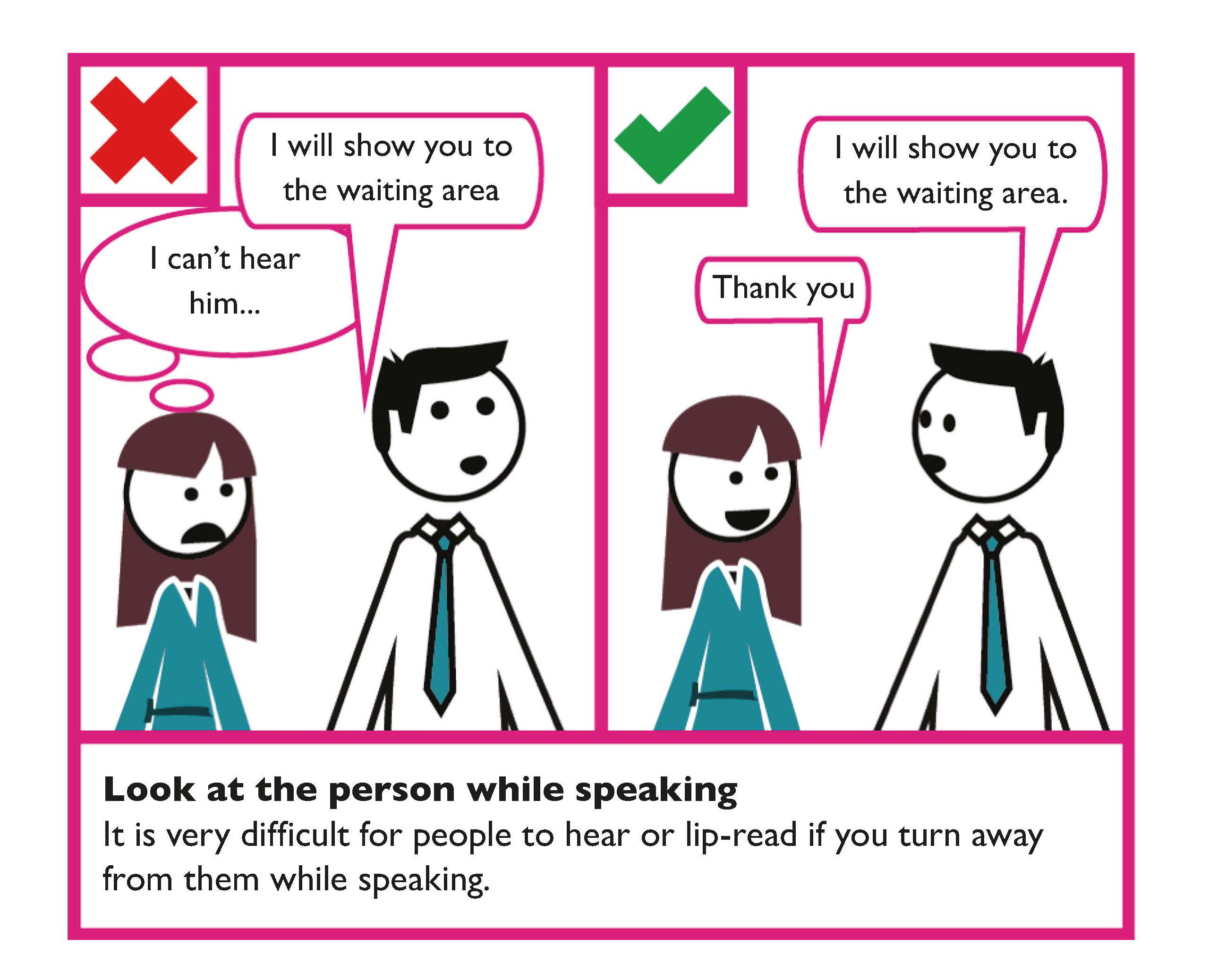Over 90% of your message is communicated non-verbally. This is influenced vocally (38%) by factors such as volume, pitch and rhythm, and by body movements (55%), specifically facial expressions.
The guidance below should be considered when communicating with a person face-to-face.
Use a friendly smile and welcoming voice
It puts customers at ease. All members of the public would like a good customer experience.

Wear a badge
When communicating with a person face-to-face, where possible, wear a name badge. This will make it easier for the person to identify who you are.
Consider the distance you are standing from the person
Do not stand too close but also make sure you do not stand too far away.
Face the person when speaking
Make eye contact and face the person when speaking to them.

Speak directly to people
For face-to-face communication, you should always speak directly to the person. This is particularly important if a person is accompanied by an interpreter (for people who have a speech difficulty or whose first language is not English) or companion (who provides assistance to the person).

Ask the person “How can I help?”
Depending on the context of your communication if you are not sure what to do, ask how you can help. Do not just jump in. The person will know if they need help and how you can provide it. Always ask the person how they want to communicate.
Listen to the person
Your body language is an important part of your listening behaviour; be aware of your posture, eye contact and facial expressions.
Be patient
Be aware that some persons may take a little longer to understand and respond.
If you offer assistance, wait until you receive permission
Never touch a person, service animal (for example a guide dog) or their assistive products (for example wheelchairs) without permission.
Consider the provision of quiet times or spaces
Consider the provision of quiet times or quiet spaces to accommodate people who may experience sensory overload, including persons with autism.
Learn more
The Irish Human Rights and Equality Commission provides For Service For All: a practical guide for Credit Unions to improve accessibility for their members.
The Irish Human Rights and Equality Commission provides Accessibility for Members of the public with Disabilities in Community Pharmacies.
The National Adult Literacy Agency (NALA) provides Writing and Design Tips.
Face-to-Face Communication Checklist
- Be aware of non-verbal communication when communicating face-to-face.
- Use a friendly smile and welcoming voice.
- Consider the distance you are standing from the person.
- Listen to the person.
- Speak directly to the person.
- Where appropriate ask the person “How can I help?”
- Find a way of communicating that works for the person.
- Be patient.
- If you offer assistance, wait until you receive permission.
- Consider the provision of quiet times or spaces.
- Do not sit or stand with the light behind you.
- Face the person when speaking. Do not put your hands in front of your mouth while speaking.
